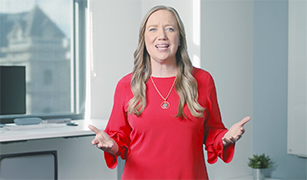At Crucial Learning, we equip people with the skills to navigate life’s most pivotal moments. As trainers, we often meet learners during those moments—at emotional, vulnerable, and transformational times.
While it’s an incredible honor to guide someone through personal growth, it’s also a delicate balancing act. One learner’s deeply personal question can easily steer the group off course. With limited classroom time, it’s vital to set boundaries that honor the individual, the group, and the content. Setting boundaries up front ensures the best possible learning experience for everyone.
Why Boundaries Matter
When learners open up and ask how course content applies to their lives, it’s a testament to the power of the material—and to your presence as a facilitator. But curiosity, emotion, and urgency can pull a session in unintended directions.
Without boundaries, we risk shifting from trainer to therapist, or from facilitator to fixer. Boundaries allow us to stay focused on our purpose: guiding learners in developing skills that they can then apply to their real-life challenges.
How to Set Boundaries Early
To support your group while staying on track, establish expectations from the very beginning. Here are two simple but powerful ways to do that:
- Define the scope: Clarify what the course will and won’t cover. Let learners know there will be opportunities for personal application (e.g., starter conversations and learning partner time) but that the class experience is foundational to their growth journey. Getting through the whole course matters, and that means sticking to the content as structured, timing included.
- Clarify your role: Explain how you’ll support them during the course—and where your role ends. Be honest about what’s beyond the scope of your time together. Do you offer office hours or one-on-one coaching? Can they email you to discuss application to their personal lives? Clarifying your capacity outside the classroom can help you address those personal and unique scenarios without derailing the class session.
By doing this early, you set an anchor that you—and your learners—can return to throughout the course.
Coaching While Honoring Boundaries
Even with clear expectations, learners may bring up sensitive, complex, or emotionally charged situations. Here are practical ways to guide the group within your boundaries:
- Redirect to the skillset: Help learners explore their situation using only the current skill or model being taught. This keeps discussions grounded and constructive.
- Build a foundation first: Trying to fix a relationship that’s been strained for decades may feel like the learner is biting off more than they can chew! If someone is stuck in a deeply personal or unresolved situation, invite them to start with a less complicated situation (e.g., a crucial situation where emotions aren’t as strong versus the example where a learner is currently stuck). This builds a foundation of capability and confidence before returning to their more challenging scenario.
- Normalize complexity: Remind the group that real life is messy and layered. Some issues might require more time or support. Depending on your organization’s resources, refer them to internal coaches, post-session support, or Crucial Learning tools. The Crucial Skills blog is a wonderful resource filled with advice from our team of experts on a wide variety of scenarios. You can use the search tool at the top right corner of the website to look up articles by keyword or topic.
- Return to the content: If energy dips or discussions veer off-course, guide the group back into the material. As Senior Master Trainer Steve Willis once shared, we don’t need to be more entertaining—we need to return to the power of the content. The most meaningful learning happens as learners make personal connections to the skills.
A Foundation for Empathy and Focus
Boundaries aren’t barriers—they’re guardrails. They help you stay focused, honor the content, meet learners where they are, and extend empathy without overextending yourself.
As trainers, facilitators, and coaches, we carry the responsibility of delivering life-changing skills. Clear boundaries support that mission. They create space for vulnerability, structure for learning, and the stability needed for transformational experiences.
By setting these boundaries from the start, we ensure that each learner walks away not only feeling seen and supported—but also empowered with the tools to create real change in their lives.










Yes! Ashley thanks for saying all of this. It’s so important for us as facilitators, and also as humans.